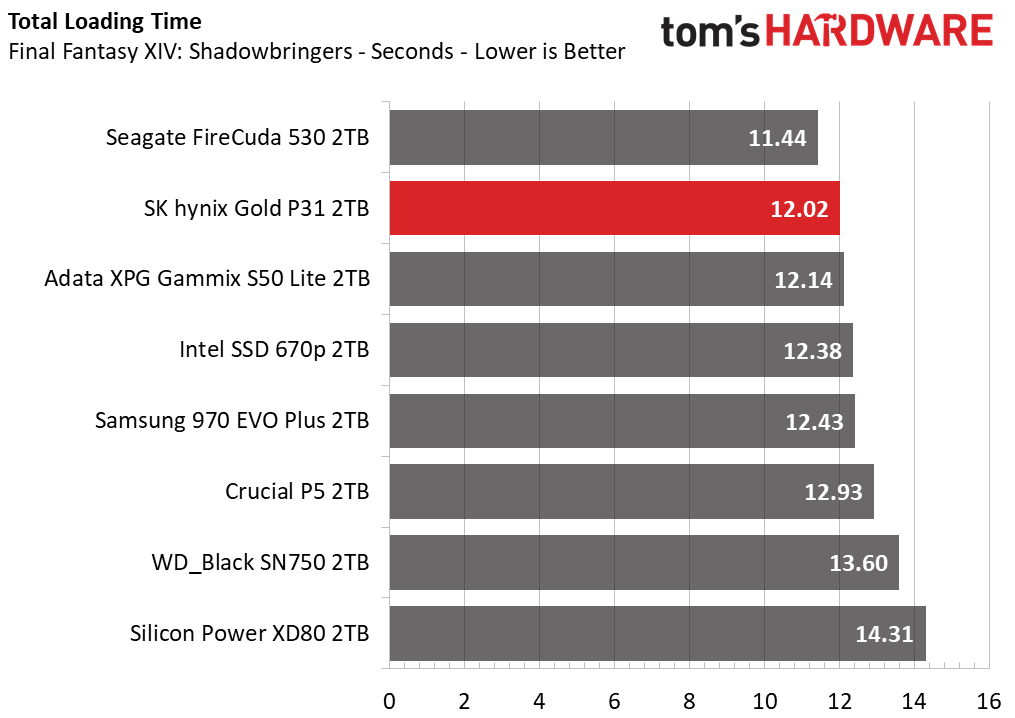Why you can trust Tom's Hardware
Comparison Products
Today we put the SK hynix Gold P31 up against the best mainstream SSDs on the market, including the Samsung 970 EVO Plus, WD_Black SN750, Crucial P5, Intel SSD 670p, and Silicon Power XD80. We also threw in the Seagate FireCuda 530 and Adata XPG Gammix S50 Lite for good measure.
Game Scene Loading - Final Fantasy XIV
Final Fantasy XIV Shadowbringers is a free real-world game benchmark that easily and accurately compares game load times without the inaccuracy of using a stopwatch.
Like the 1TB SK hynix Gold P31, the 2TB model is pretty snappy at loading game levels. It not only outperformed the Samsung 970 EVO Plus, WD_Black SN750, and Crucial P5, but it also edged ahead of the Adata XPG Gammix S50 Lite.
Transfer Rates – DiskBench
We use the DiskBench storage benchmarking tool to test file transfer performance with a custom dataset. We copy a 50GB dataset including 31,227 files of various types, like pictures, PDFs, and videos to a new folder and then follow-up with a reading test of a newly-written 6.5GB zip file.
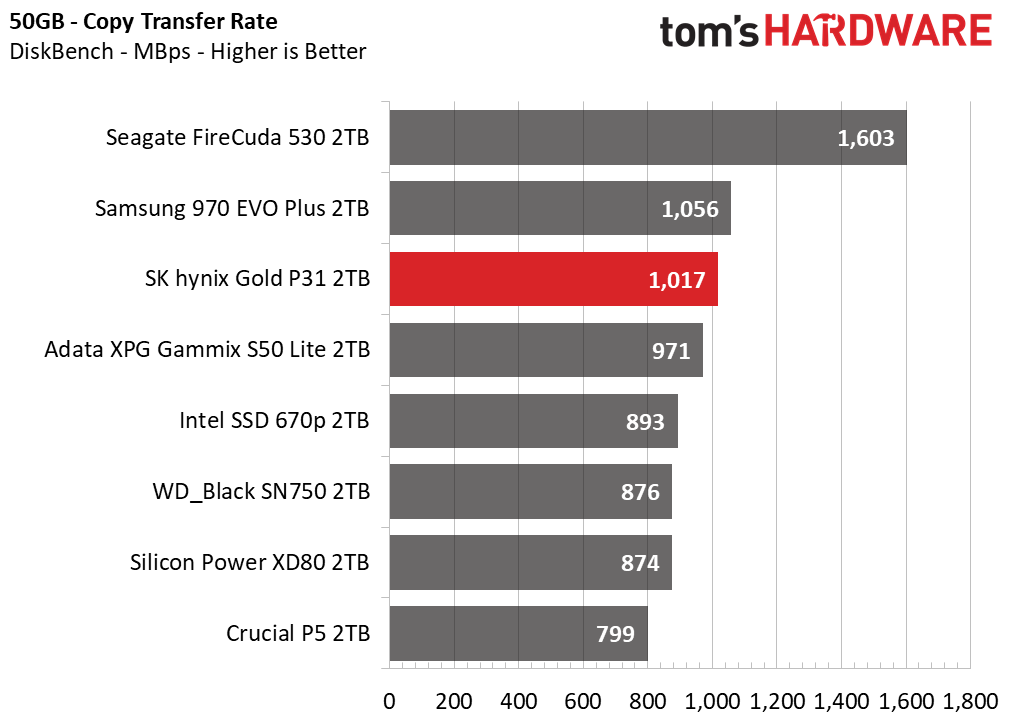

Whether you’re copying files on the SSD or just reading them back, the SK hynix Gold P31 should perform very well. In our testing, the Gold P31 scored third in the copy test and did very well when reading back our large test file.
Trace Testing – PCMark 10 Storage Test
PCMark 10 is a trace-based benchmark that uses a wide-ranging set of real-world traces from popular applications and everyday tasks to measure the performance of storage devices. The quick benchmark is more relatable to those who use their PCs for leisure or basic office work, while the full benchmark relates more to power users.
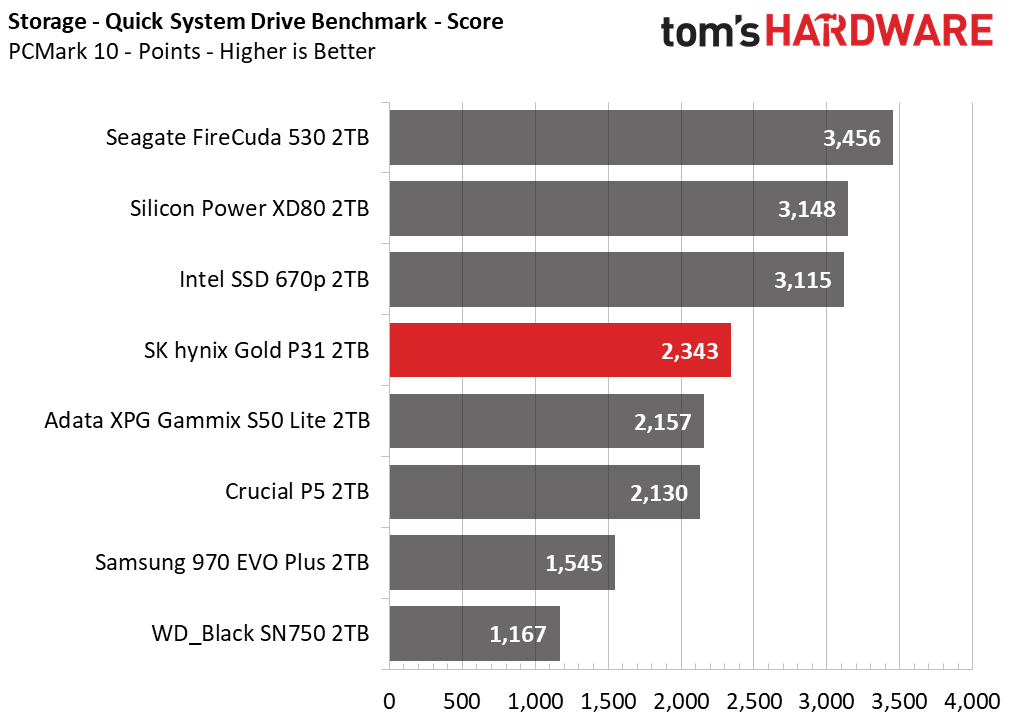
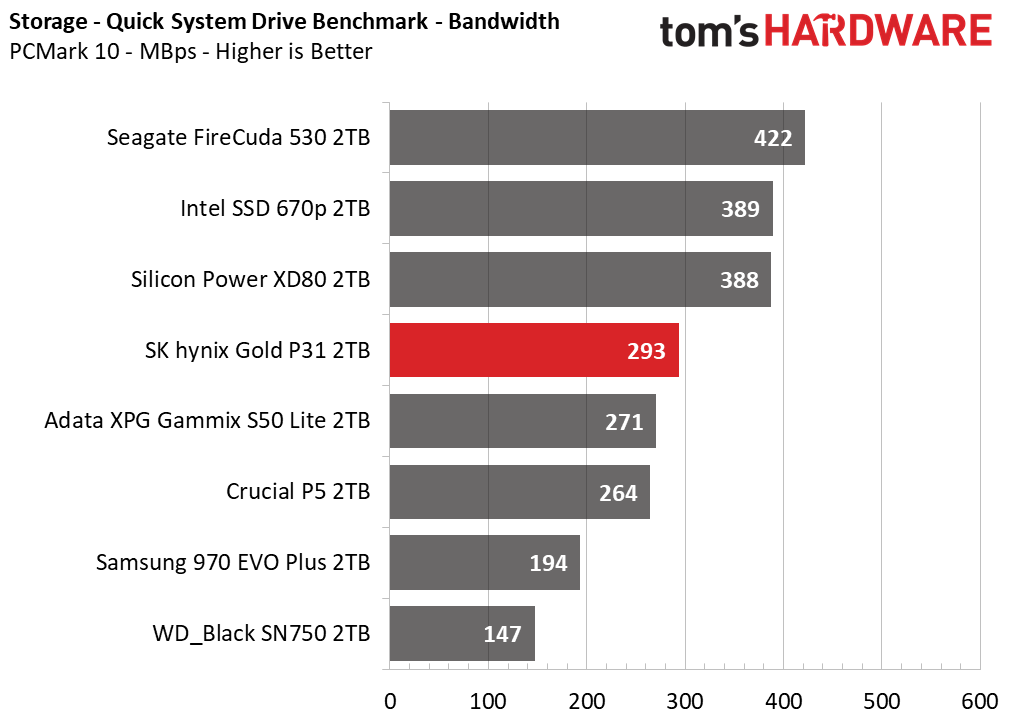
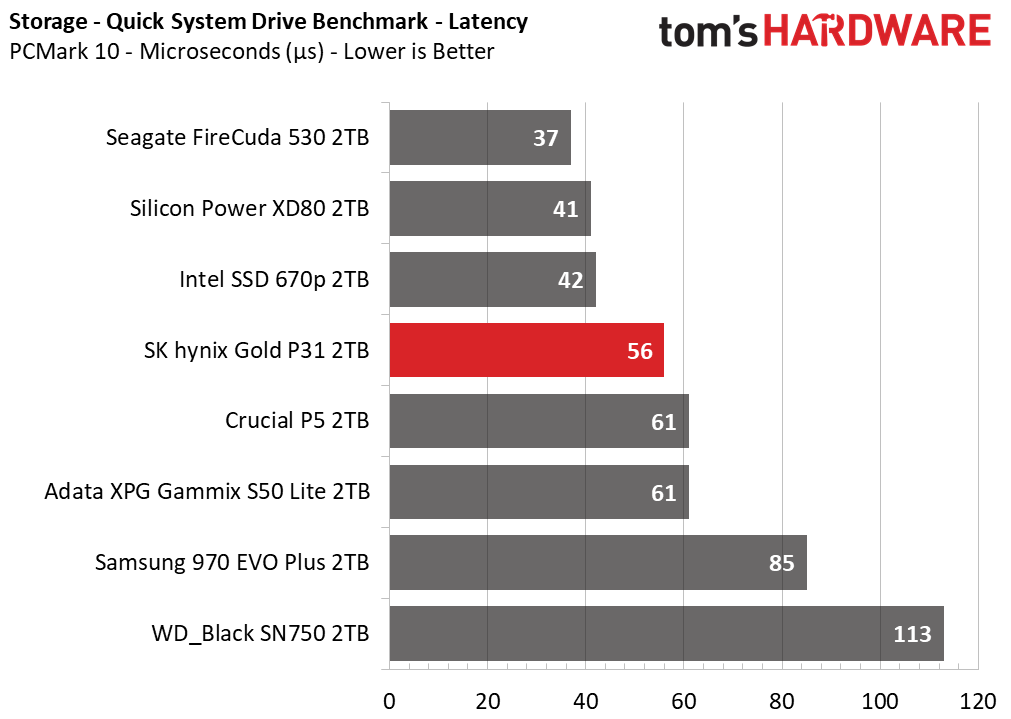

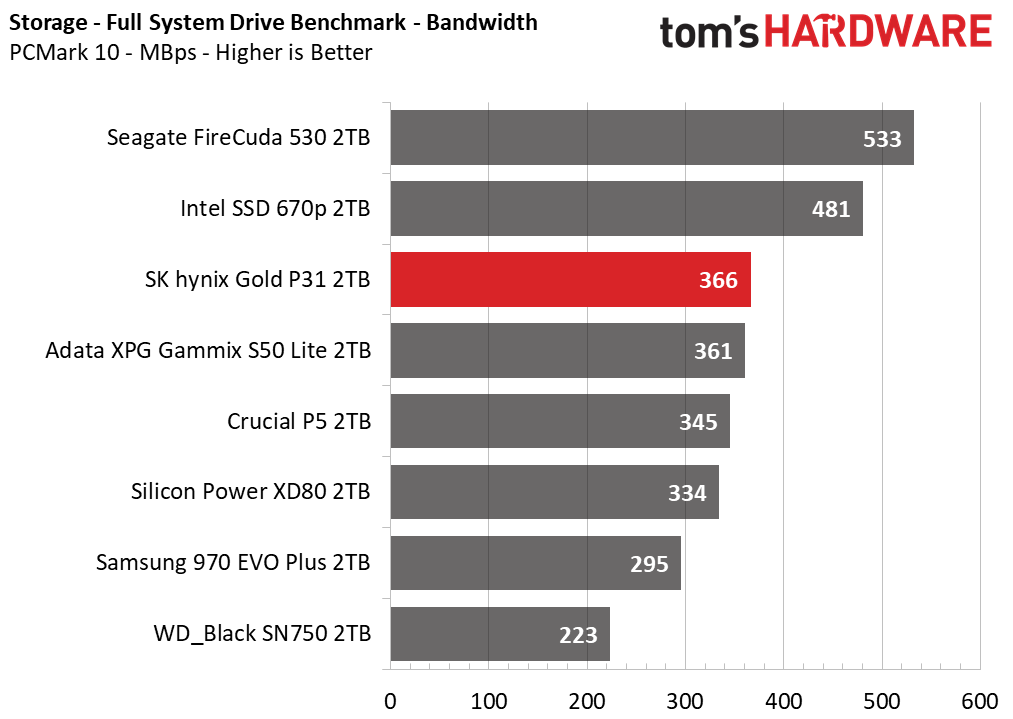
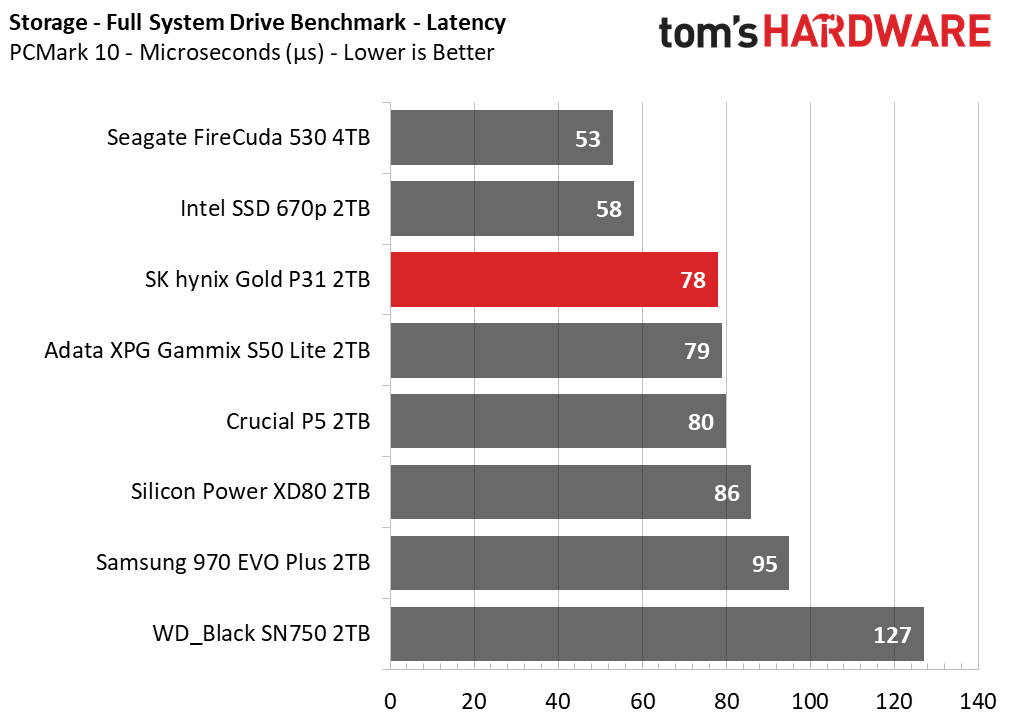
The SK hynix Gold P31 beat the Samsung and WD_Black in the light workloads during the quick test, but it couldn’t keep up with the Intel SSD 670p and Silicon Power XD80.
Get Tom's Hardware's best news and in-depth reviews, straight to your inbox.
The much longer Full System Drive benchmark is more taxing. The P31 traded blows with the XD80, but it still fell behind the highly-tuned Intel SSD 670p and the wickedly-fast Seagate FireCuda 530.
Synthetic Testing - ATTO / CrystalDiskMark
ATTO and CrystalDiskMark (CDM) are free and easy-to-use storage benchmarking tools that SSD vendors commonly use to assign performance specifications to their products. Both of these tools give us insight into how each device handles different file sizes.
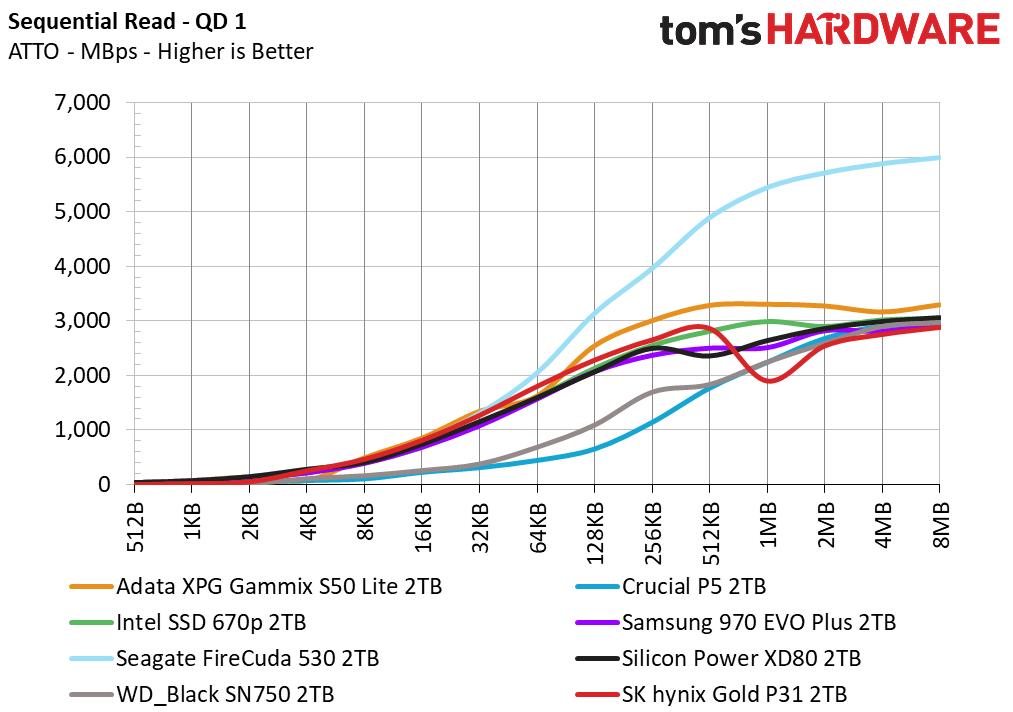
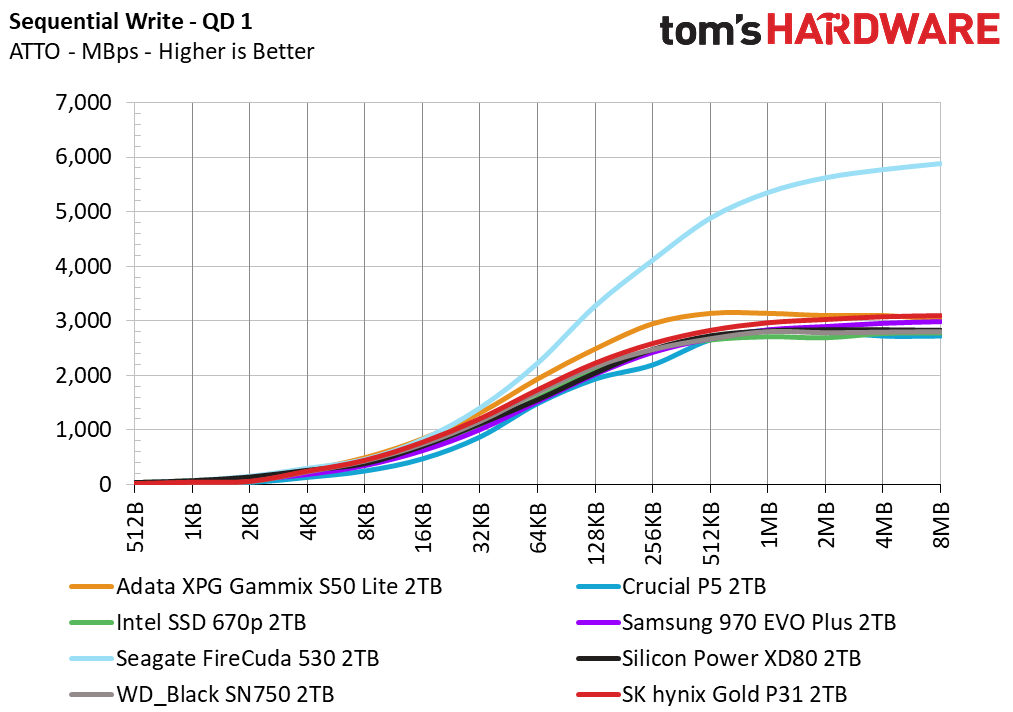
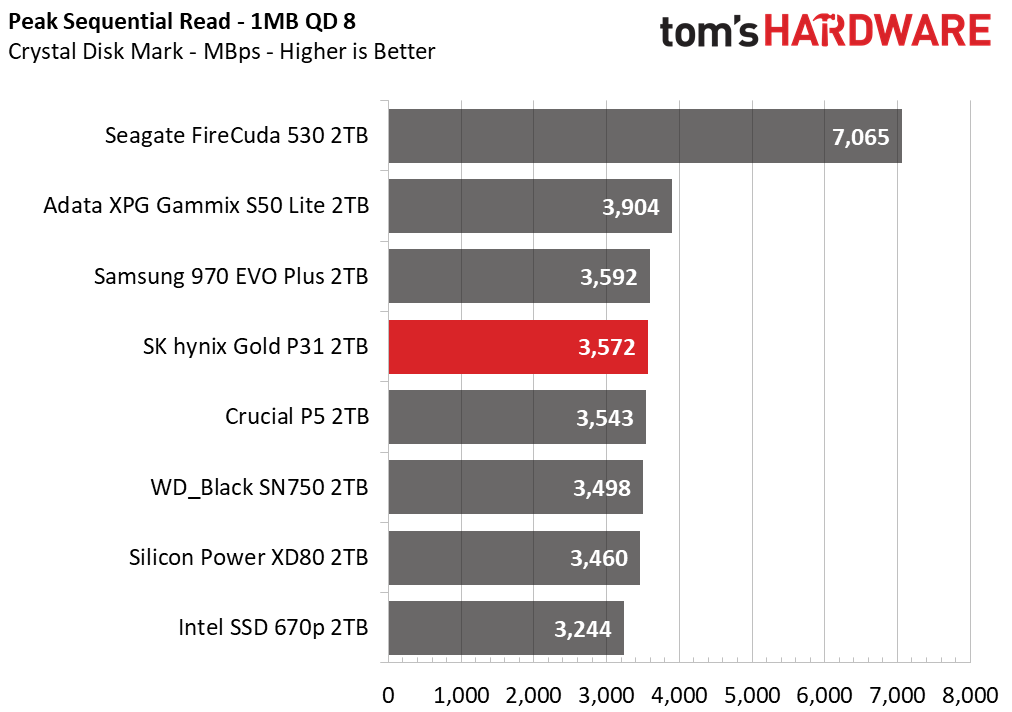
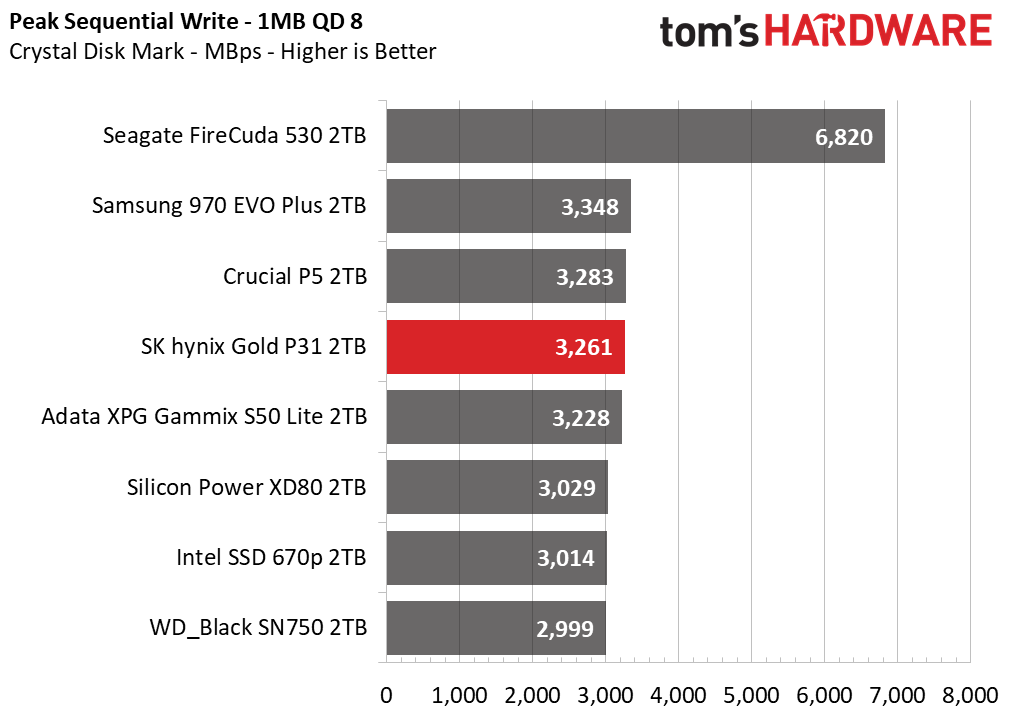
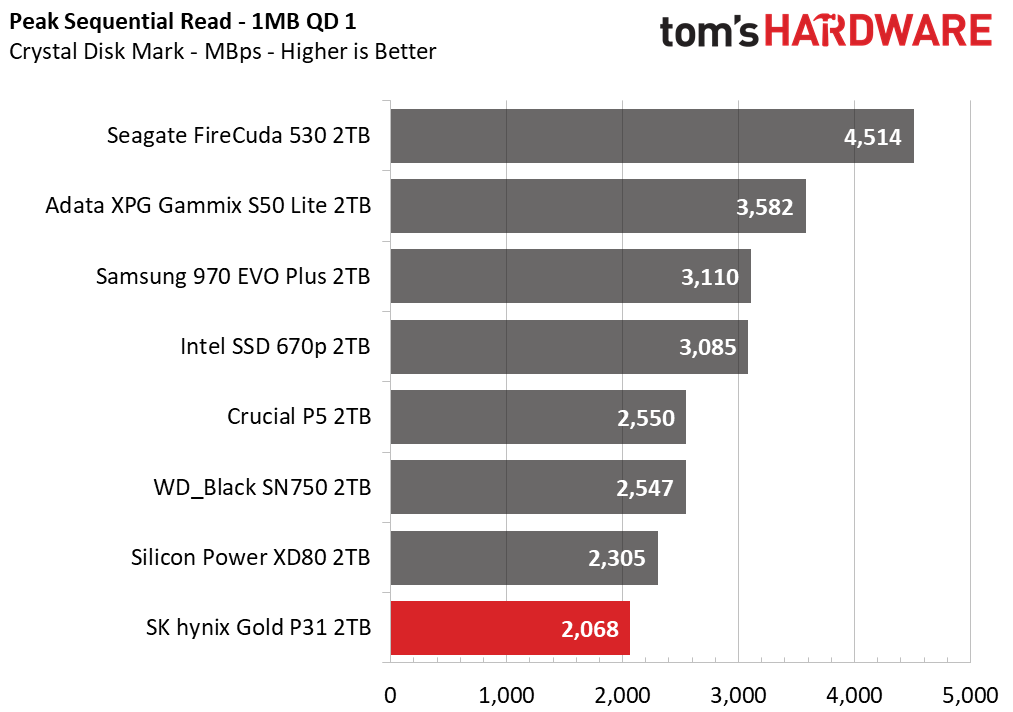


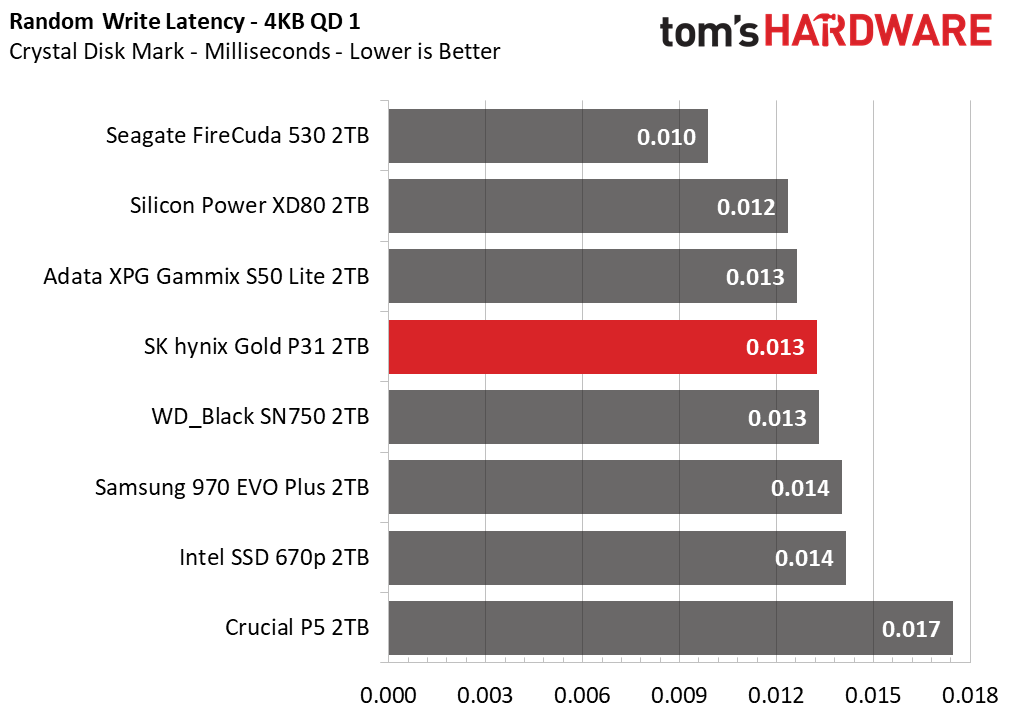
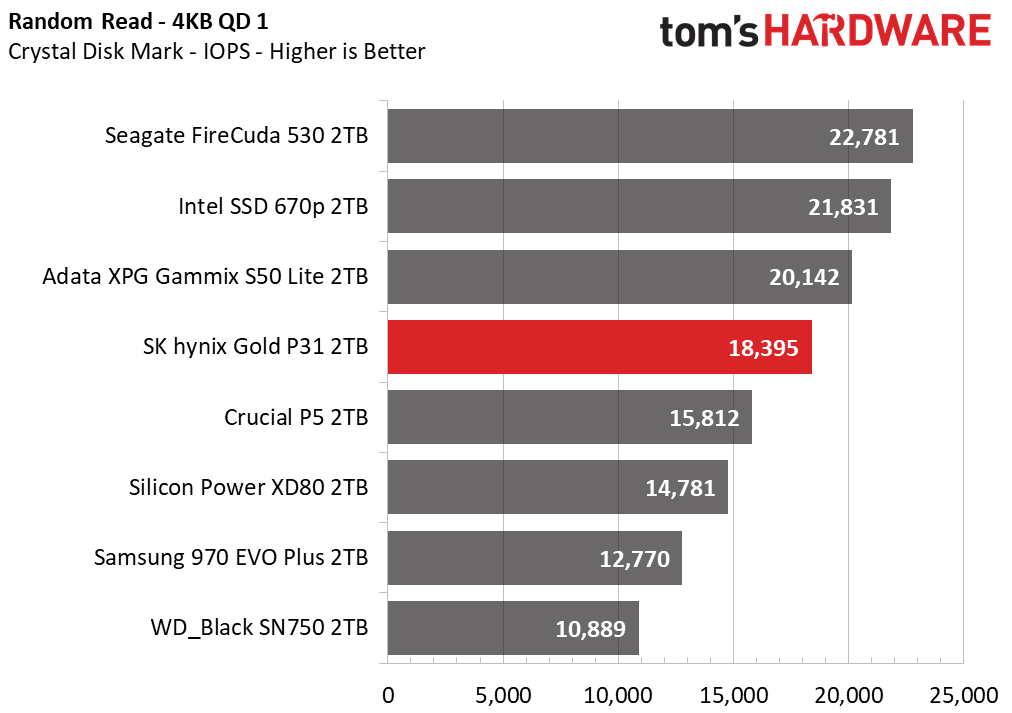
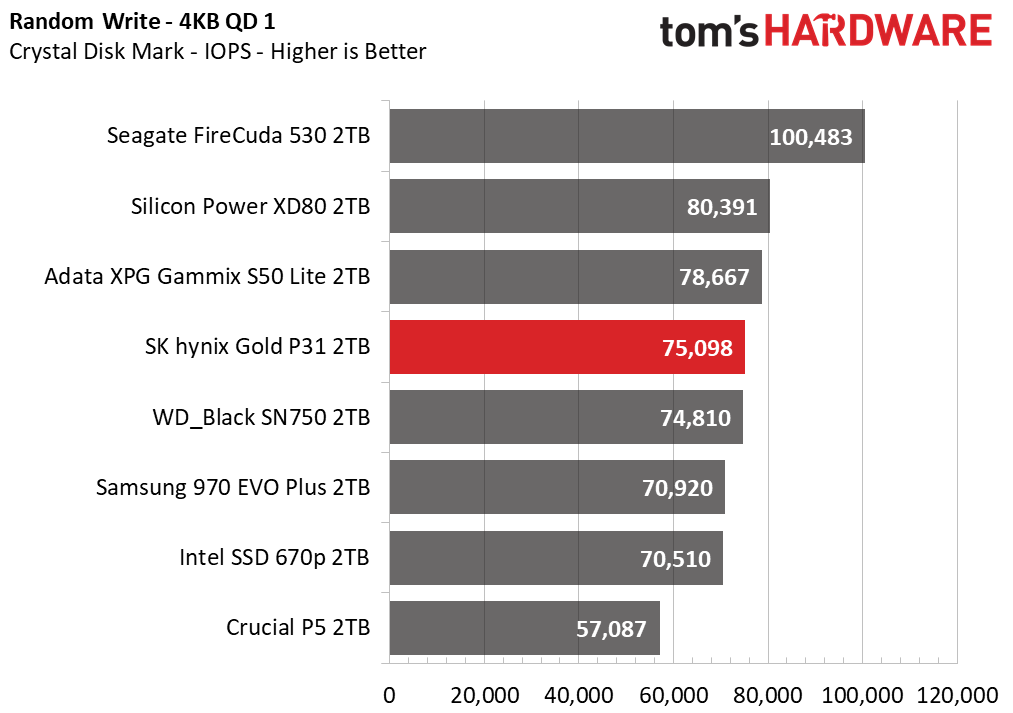

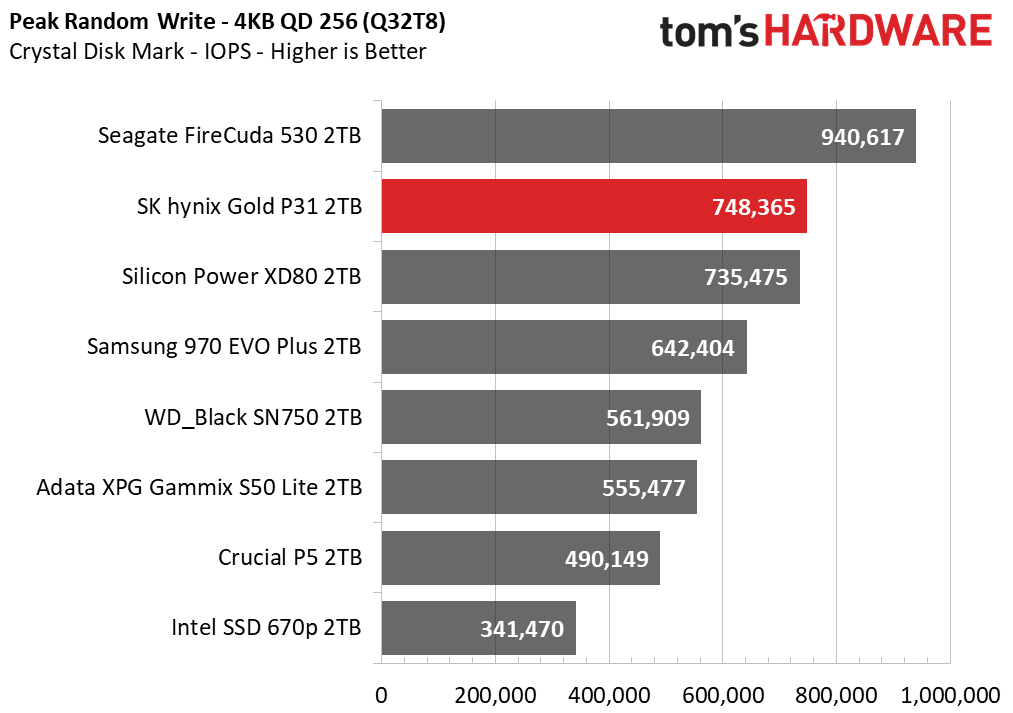
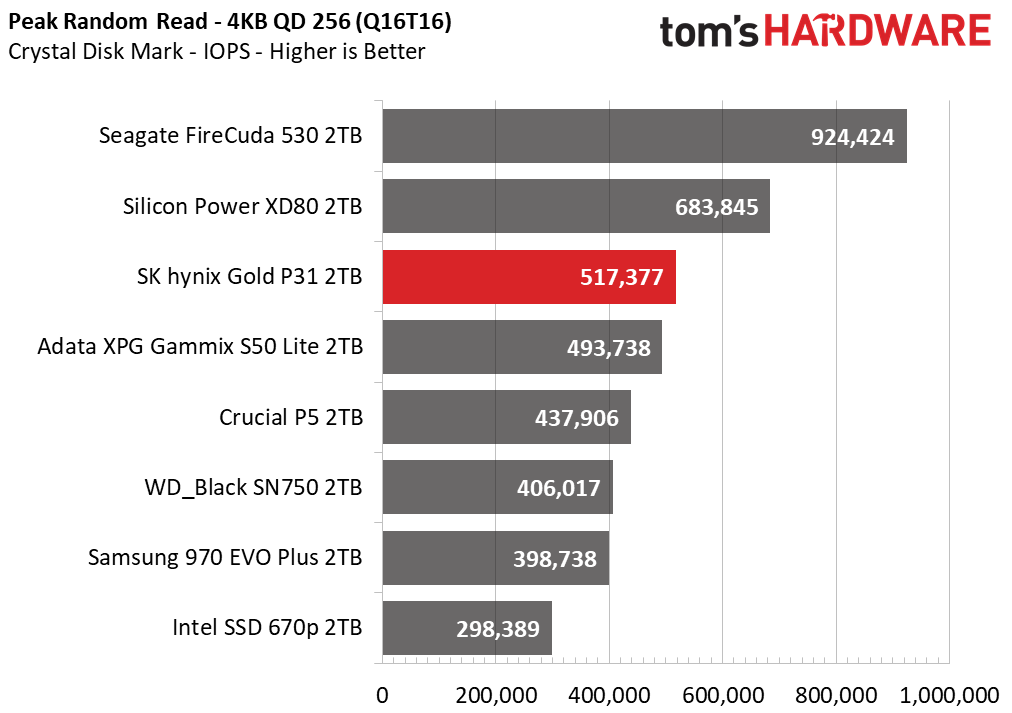
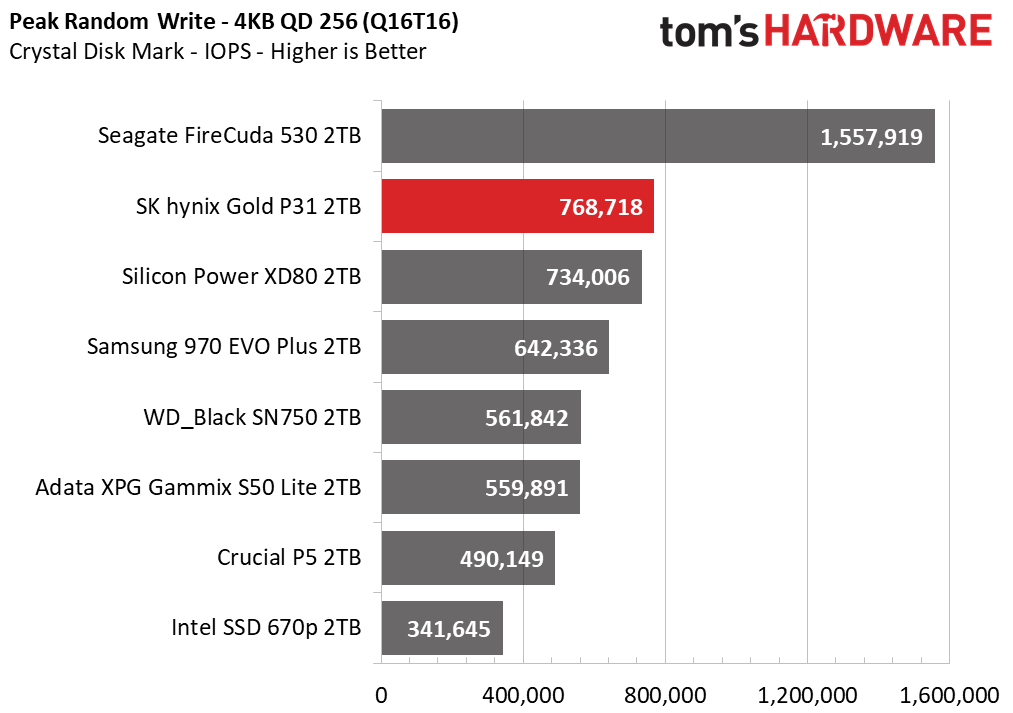
The Gold P31’s ATTO results at a queue depth of 1 (QD1) reveal fast performance across most block sizes. The drive struggled with 1MB blocks, but it returned to nearly full speed when tasked with even larger blocks.
The P31’s performance in random workloads is respectable, but it isn’t quite as responsive as we hoped to see. The Adata XPG Gammix S50 Lite and Intel SSD 670p are both faster during this 4K random workload.
Sustained Write Performance & Cache Recovery
Official write specifications are only part of the performance picture. Most SSDs implement a write cache, a fast area of (usually) pseudo-SLC programmed flash that absorbs incoming data. Sustained write speeds can suffer tremendously once the workload spills outside of the cache and into the "native" TLC or QLC flash. We use iometer to hammer the SSD with sequential writes for 15 minutes to measure both the size of the write cache and performance after the cache is saturated. We also monitor cache recovery via multiple idle rounds.
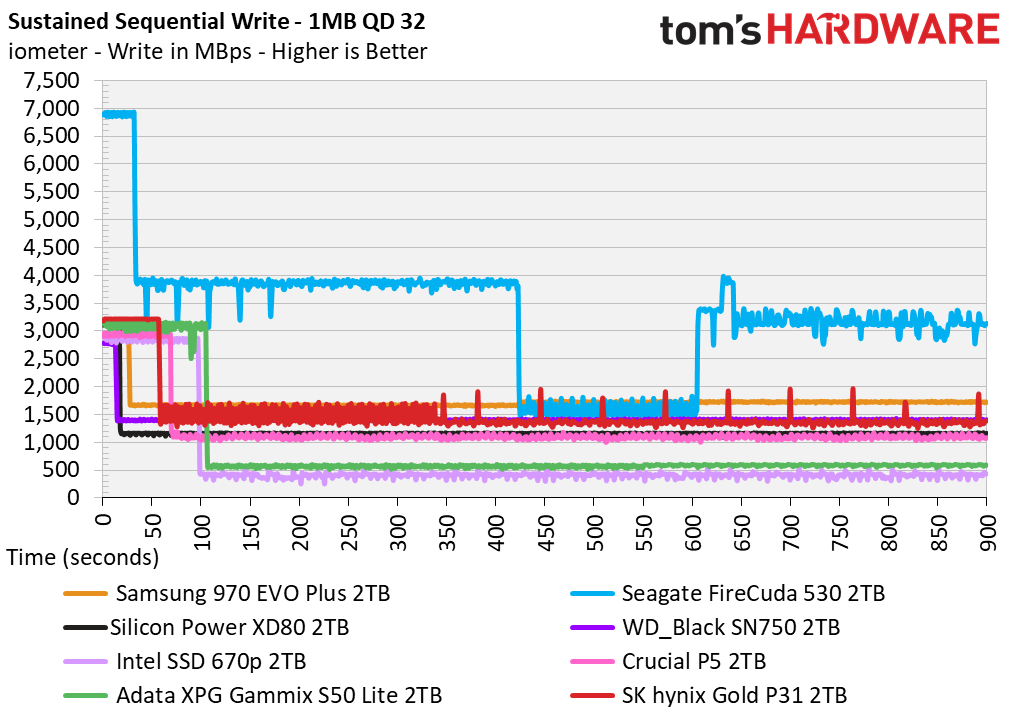
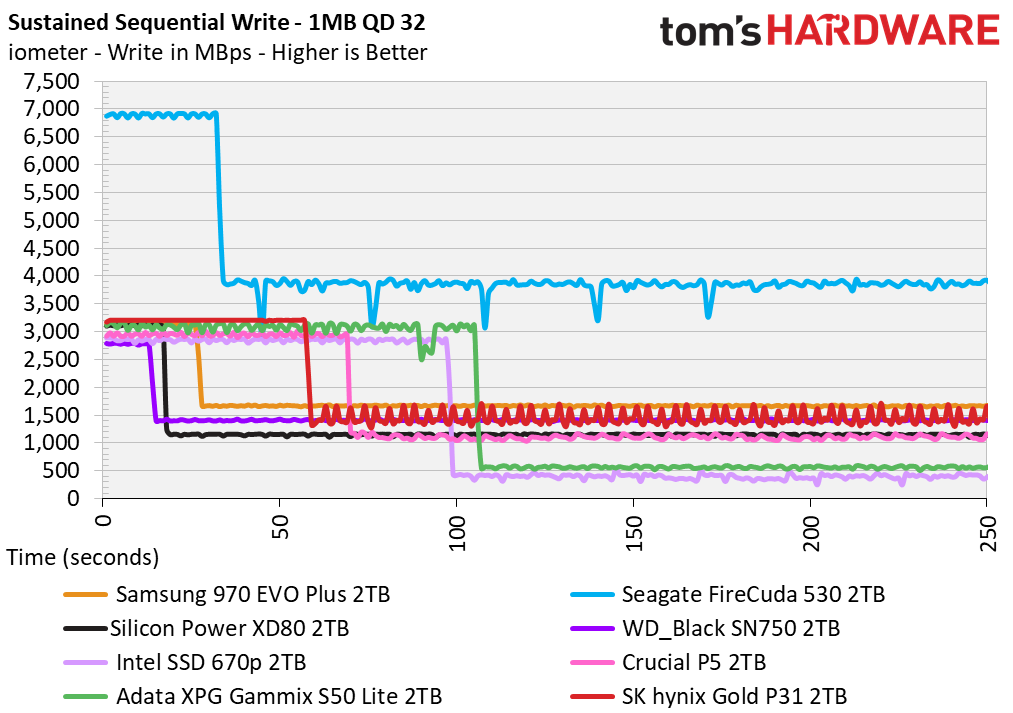
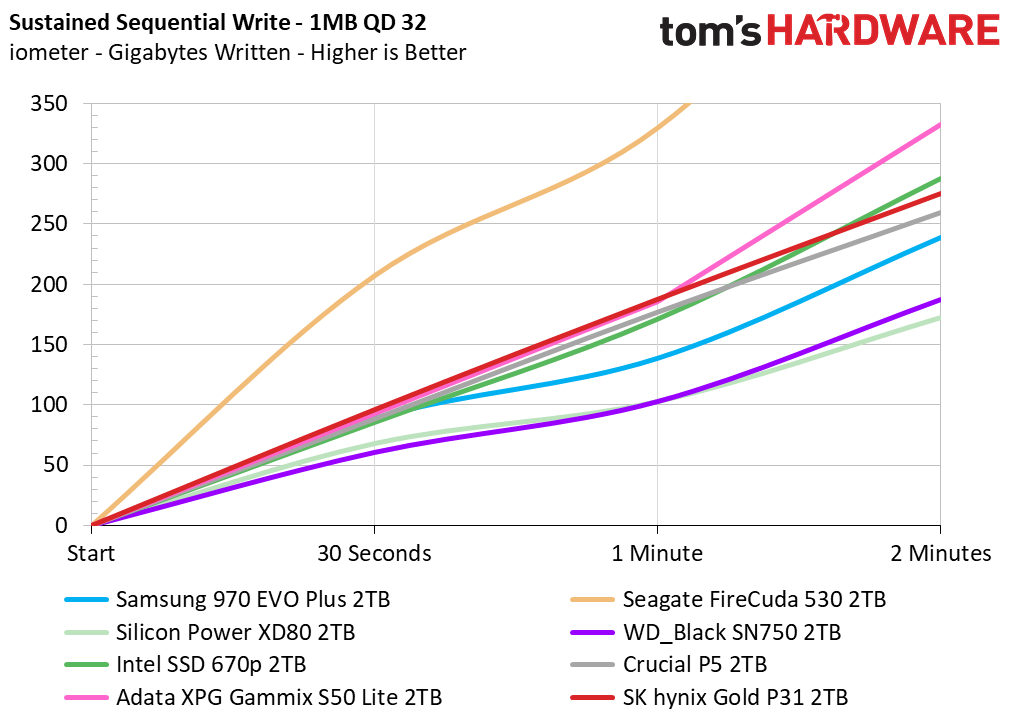


According to our measurements, the SK hynix Gold P31 has a large 185GB hybrid SLC cache and 12GB static cache, both of which are roughly twice the capacity of the 1TB models.
After the workload filled the SLC cache at a rate of 3.2 GBps, post-cache write speeds degraded to 1.4 GBps for the remainder of the test. We let the drive sit idle, but it didn’t recover any of the dynamic cache within the allocated 30-minute window. Instead, it only recovered the small static cache.
Power Consumption and Temperature
We use the Quarch HD Programmable Power Module to gain a deeper understanding of power characteristics. Idle power consumption is an important aspect to consider, especially if you're looking for a laptop upgrade. Some SSDs can consume watts of power at idle while better-suited ones sip just milliwatts. Average workload power consumption and max consumption are two other aspects of power consumption, but performance-per-watt is more important. A drive might consume more power during any given workload, but accomplishing a task faster allows the drive to drop into an idle state more quickly, ultimately saving energy.
We also monitor the drive’s temperature via the S.M.A.R.T. data and an IR thermometer to see when (or if) thermal throttling kicks in and how it impacts performance. Bear in mind that results will vary based on the workload and ambient air temperature.

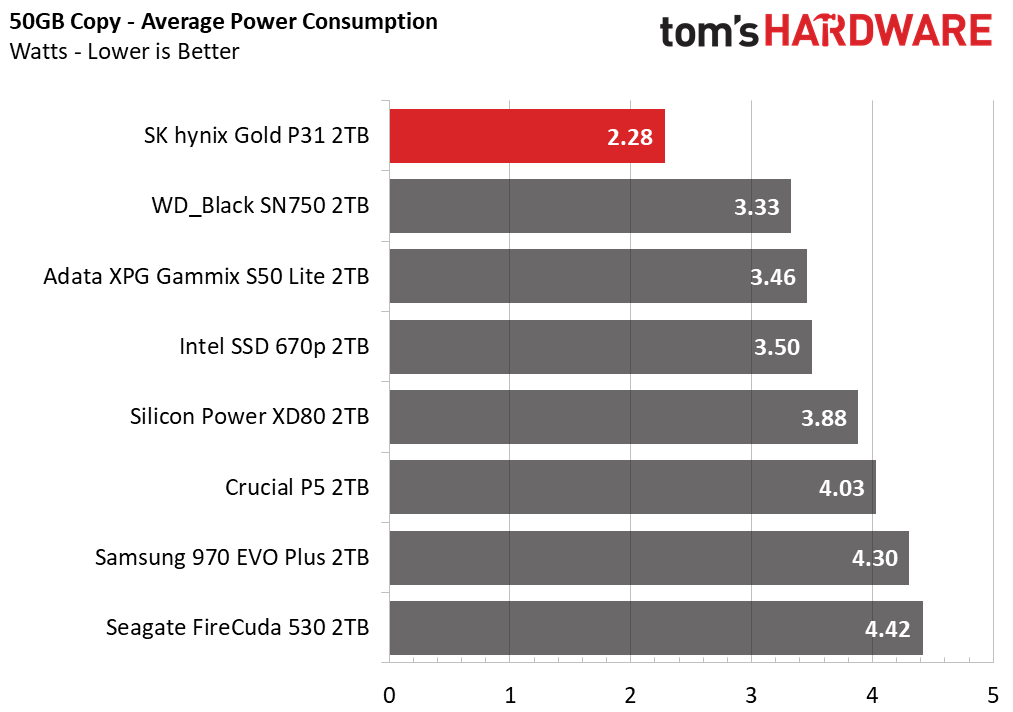
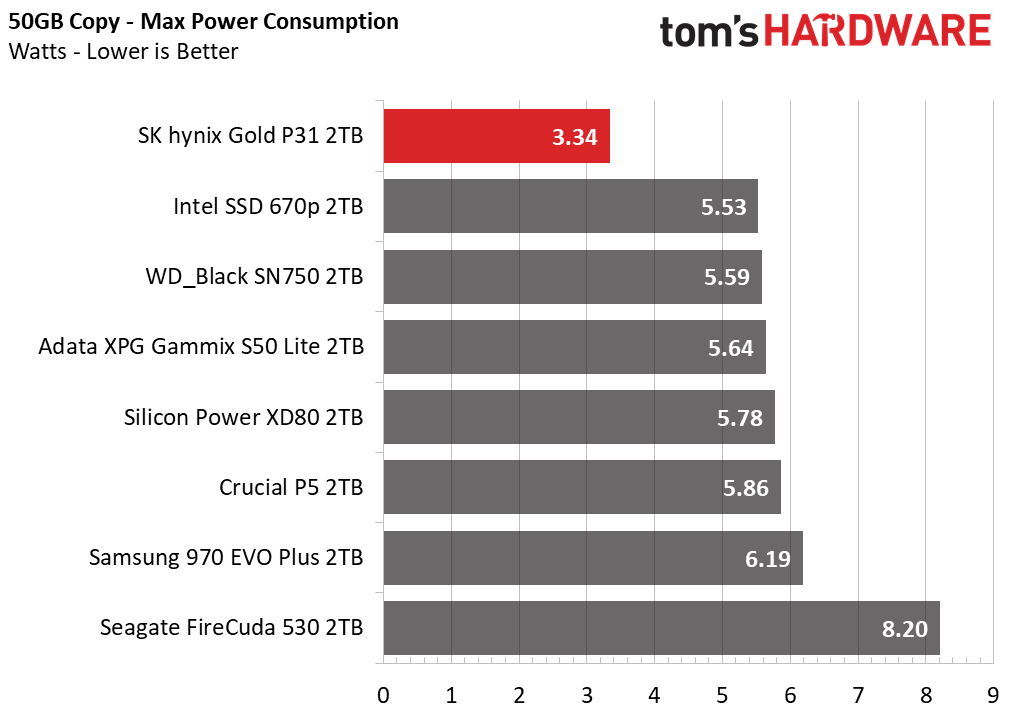

The 2TB SK hynix Gold P31 proved to be very power efficient, putting the rest of the comparison pool to shame with its exceptional efficiency score. The Gold P31’s average power consumption and peak consumption were the lowest in the group. It was also very conservative at idle, consuming just 353mW with ASPM disabled.
The SK hynix Gold P31 should perform throttle-free during most tasks, but very large sequential write workloads might trigger throttling if it doesn’t have active cooling or a heatsink. At idle in a 24 degree Celsius (C) room, the SSD reported temperatures of roughly 38-42C. After writing roughly 400GB of data to the SSD, write performance started to gracefully degrade after surpassing the thermal throttle point (83-84C according to the SSD’s S.M.A.R.T. data).
Test Bench and Testing Notes
| CPU | Intel Core i9-11900K |
| Motherboard | ASRock Z590 Taichi |
| Memory | 2x8GB Kingston HyperX Predator DDR4 5333 |
| Graphics | Intel UHD Graphics 750 |
| CPU Cooling | Alphacool Eissturm Hurricane Copper 45 3x140mm |
| Case | Streacom BC1 Open Benchtable |
| Power Supply | Corsair SF750 Platinum |
| OS Storage | WD_Black SN850 2TB |
| Operating System | Windows 10 Pro 64-bit 20H2 |
We use a Rocket Lake platform with most background applications such as indexing, windows updates, and anti-virus disabled in the OS to reduce run-to-run variability. Each SSD is prefilled to 50% capacity and tested as a secondary device. Unless noted, we use active cooling for all SSDs.
MORE: Best SSDs
MORE: How We Test HDDs And SSDs
MORE: All SSD Content
Current page: 2TB Performance Results for SK hynix Gold P31
Prev Page 1TB Performance Results for SK hynix Gold P31 Next Page Conclusion
Sean is a Contributing Editor at Tom’s Hardware US, covering storage hardware.
-
King_V Some nits to picK pick (because, clearly, I'm more likely to fumble when I'm pointing out someone else's fumbles)Reply
Spec table column headers both say 1TB, the first one should be 500GB (or 512?)
Paragraph below spec table says "though the 500GB model suffers a minimal performance loss with a write speed that is 100MBps lower" but the table shows the 500GB model having a faster sequential write speed. Which one is correct?That aside - I'm definitely intrigued that it's competitive speed-wise, and manages that impressive level of power efficiency. I think this one might be on my list for a future PC. -
seanwebster Thanks, I actually saw that too not too long ago and already alert the team on the errors. The write speeds should be swapped. 3,200 on the 1TB and 3,100 on the 500GB. Correction should go live shortly.Reply -
cknoettg One more possible point of contention.Reply
The article states that the P31 Gold does not support AES-256.
But SK Hynix's own website for the P31 gold states that it does:
https://skhynix.freshdesk.com/support/solutions/folders/48000658600#faq_title
"All SSDs from SK hynix come with the AES 256-bit encryption feature. "
I have seen manufacturer's documentation be wrong, but is there any way to test to see if it does or not? -
seanwebster Reply
Nice find. This wasn't posted nor articulated at the time of publishing. We will update to include this.cknoettg said:One more possible point of contention.
The article states that the P31 Gold does not support AES-256.
But SK Hynix's own website for the P31 gold states that it does:
https://skhynix.freshdesk.com/support/solutions/folders/48000658600#faq_title"All SSDs from SK hynix come with the AES 256-bit encryption feature. "
I have seen manufacturer's documentation be wrong, but is there any way to test to see if it does or not? -
DZIrl And what is benefit for user in using 128 layers SSD? Nothing! Drives even cheaper to produce are not cheaper then any other.Reply
Why then? -
Soaptrail Reply
Thank you.Rogue Leader said:This thread has been reopened due to the article update
Anyone know what changed in the new firmware. I skimmed the article and must have missed it. Also it appears not to affect the 1TB drive since those numbers were not updated. I know the 500GB page was updated but what were the original benchmarks for that drive? -
retrofitit Who cares if it has a green PCB?Reply
I put it in my laptop, put the bottom back on and it is not visible.
The desktop another is going in has no glass panel.
It could have a hot pink PCB or baby poo yellow PCB and I would not care, the efficiency and performance is all that matters. -
retrofitit What I would like to know is are they comparing it to the ADATA SX8200 Pro that was provided as an early reviewer sample or the lower spec version actually being sold retail?Reply

